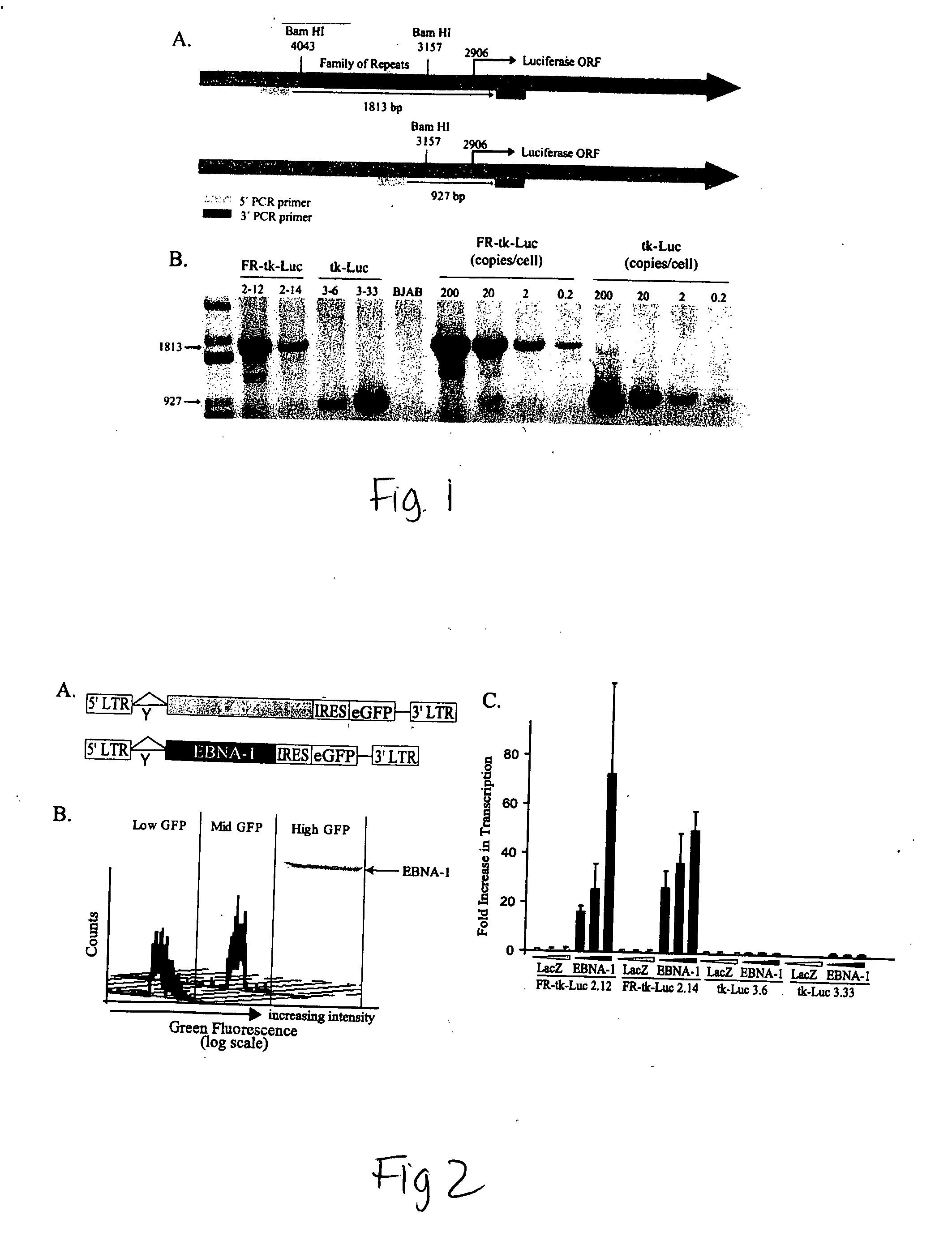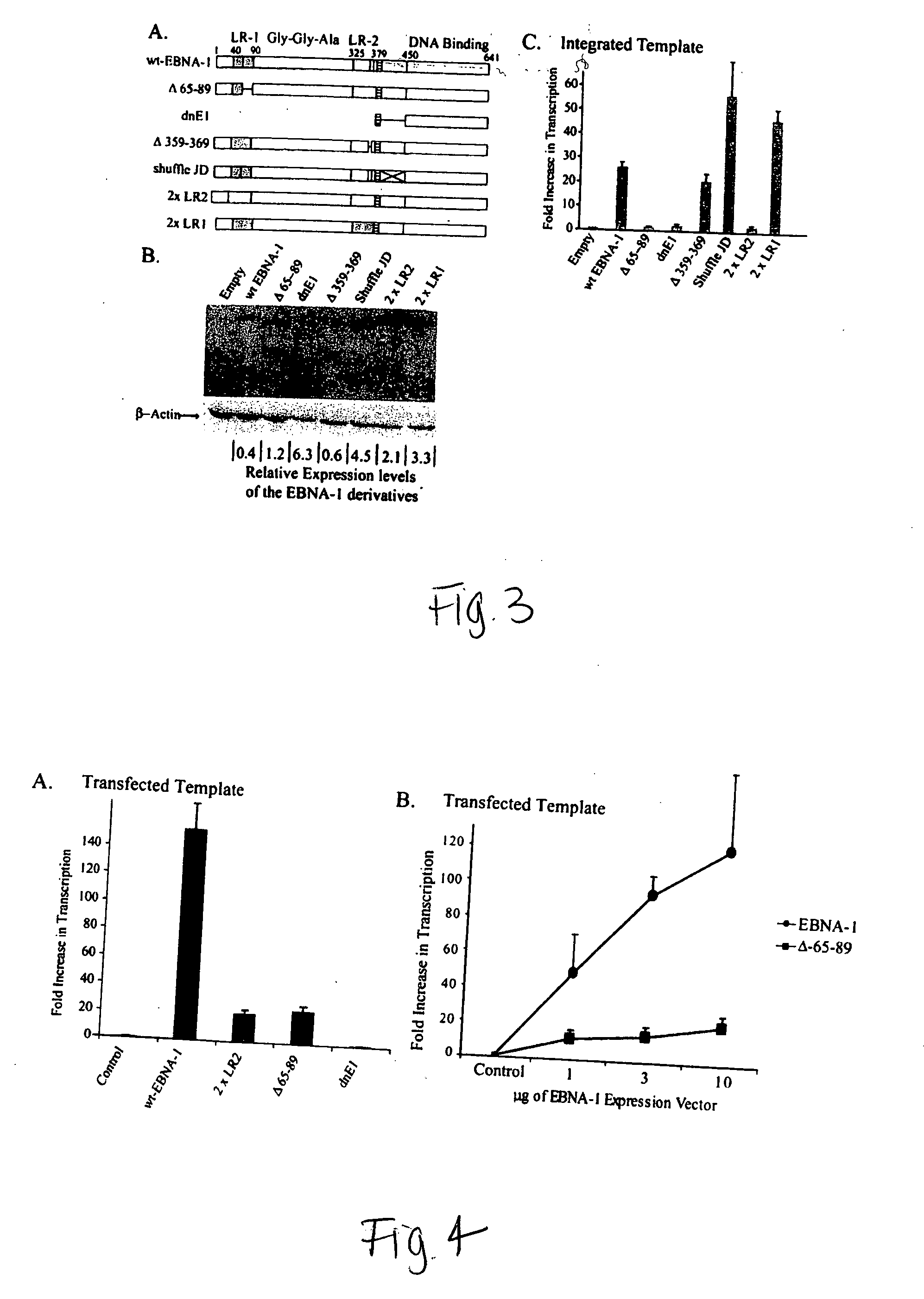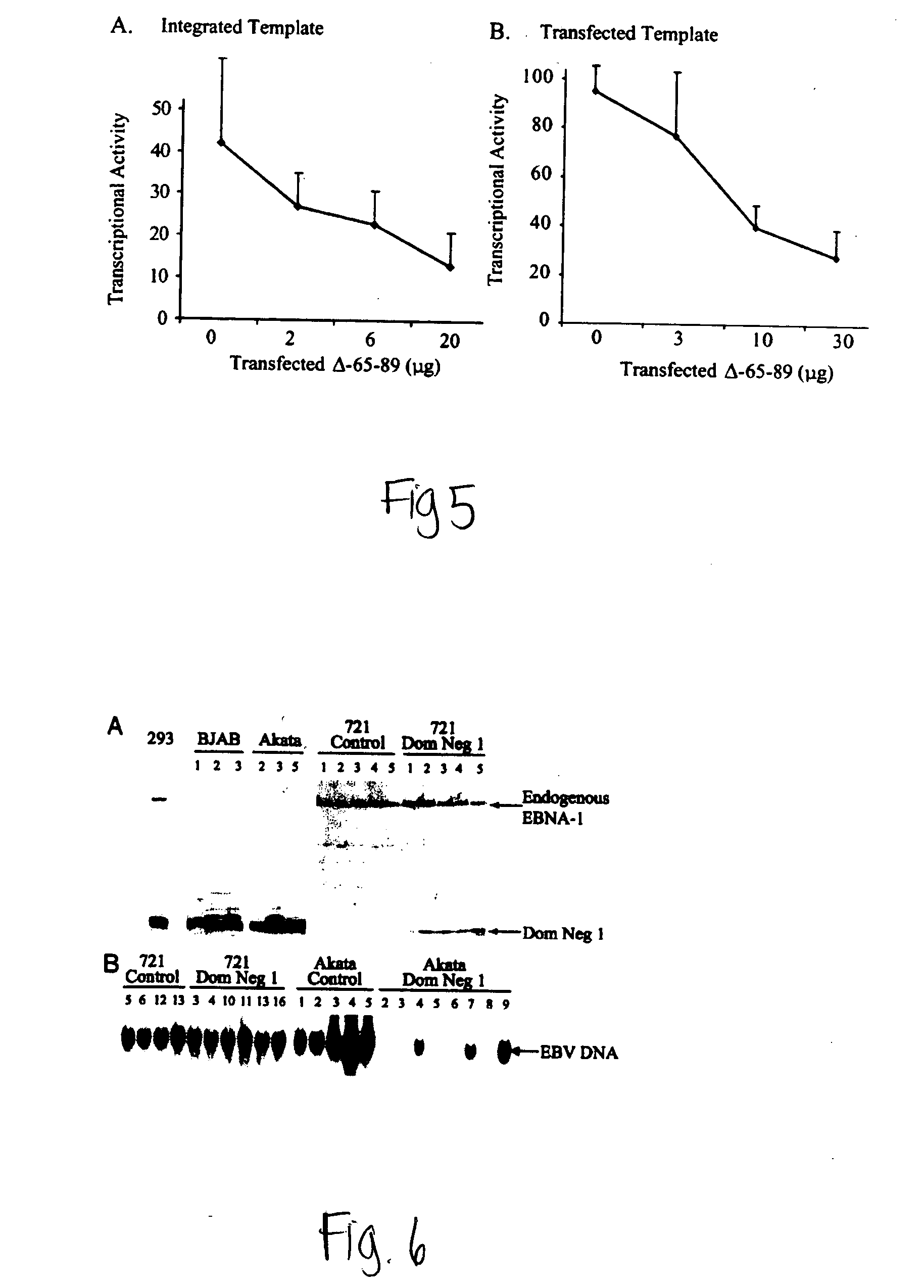Non-cytotoxic oriP replicon
a cytotoxic, orip technology, applied in the field of orip replicon, can solve the problems of cytotoxicity restricting its use in cell culture applications and gene therapy, and the inability to assess the contribution to transcription mediated by the trafficking of transcription factors prior to the initial assessment,
- Summary
- Abstract
- Description
- Claims
- Application Information
AI Technical Summary
Benefits of technology
Problems solved by technology
Method used
Image
Examples
example i
Materials and Methods
[0131] Cell culture. The BJAB cell line, an EBV-negative Burkitt's lymphoma derivative, has been previously described (Steinitz et al., 1975). Cells were grown in RPMI 1640 medium (GibcoBRL) supplemented with 10% fetal bovine serum, 40 U of penicillin / ml, and 50 μg of streptomycin / ml at 37° C. in a 5% CO2 humidified atmosphere.
[0132] Transfection and cloning. Electroporation of 5×106 cells was performed in 500 μl of complete medium with 250 V and a capacitance of 960 μF using a Bio-Rad (Hercules, Calif.) generator. BJAB cells with integrated EBV-responsive templates were established by cotransfecting DNAs expressing the puromycin resistance gene and DNAs expressing either FR-thymidine kinase (TK)-luciferase or TK-luciferase. Forty-eight hours posttransfection, cells were plated in limiting dilutions on 96-well plates in the presence of 1 μg of puromycin / ml. The cells were grown for 2 to 3 weeks, and the proliferating cells were counted. Those microwell cultur...
example ii
Materials and Methods
[0156] Cell Culture and Transient Transfection. EBV-negative B cell lines used in these experiments include BJAB (Klein et al., 1974) and DB75 (Ben-Bassat et al., 1977). EBV-positive B cell lines used in these experiments include 721 (Kavathas et al., 1980), Oku1 (Nonkwelo et al., 1997), AG-876 (Pizzo et al., 1978), 11 / 17-3 (Sugden et al., 1979), Akata (Takada et al., 1991), GG68 (Weigel et al., 1983), and Sav1 (Ruf et al., 1999). The EBV-positive cell lines, RPMI 1788 (CCL-156), Daude (CCL-213), and Namalwa (CRL-1432), are described in the ATCC catalog. DLD1 cells (CCL-221), an EBV-negative colon carcinoma cell line, and SAOS2 (HTB-85), a human osteosarcoma cell line, are available from the ATCC. The VM-10 cell line (Wu et al., 1993; Wu et al., 1994) was kindly provided by A. Levine (Institute for Advanced Studies, Princeton). VM10 cells were grown at 39° C. and apoptosis was induced by a temperature shift to 32° C.
[0157] Retroviral Production and Infection....
PUM
| Property | Measurement | Unit |
|---|---|---|
| temperature | aaaaa | aaaaa |
| capacitance | aaaaa | aaaaa |
| total volume | aaaaa | aaaaa |
Abstract
Description
Claims
Application Information
 Login to View More
Login to View More - R&D
- Intellectual Property
- Life Sciences
- Materials
- Tech Scout
- Unparalleled Data Quality
- Higher Quality Content
- 60% Fewer Hallucinations
Browse by: Latest US Patents, China's latest patents, Technical Efficacy Thesaurus, Application Domain, Technology Topic, Popular Technical Reports.
© 2025 PatSnap. All rights reserved.Legal|Privacy policy|Modern Slavery Act Transparency Statement|Sitemap|About US| Contact US: help@patsnap.com



